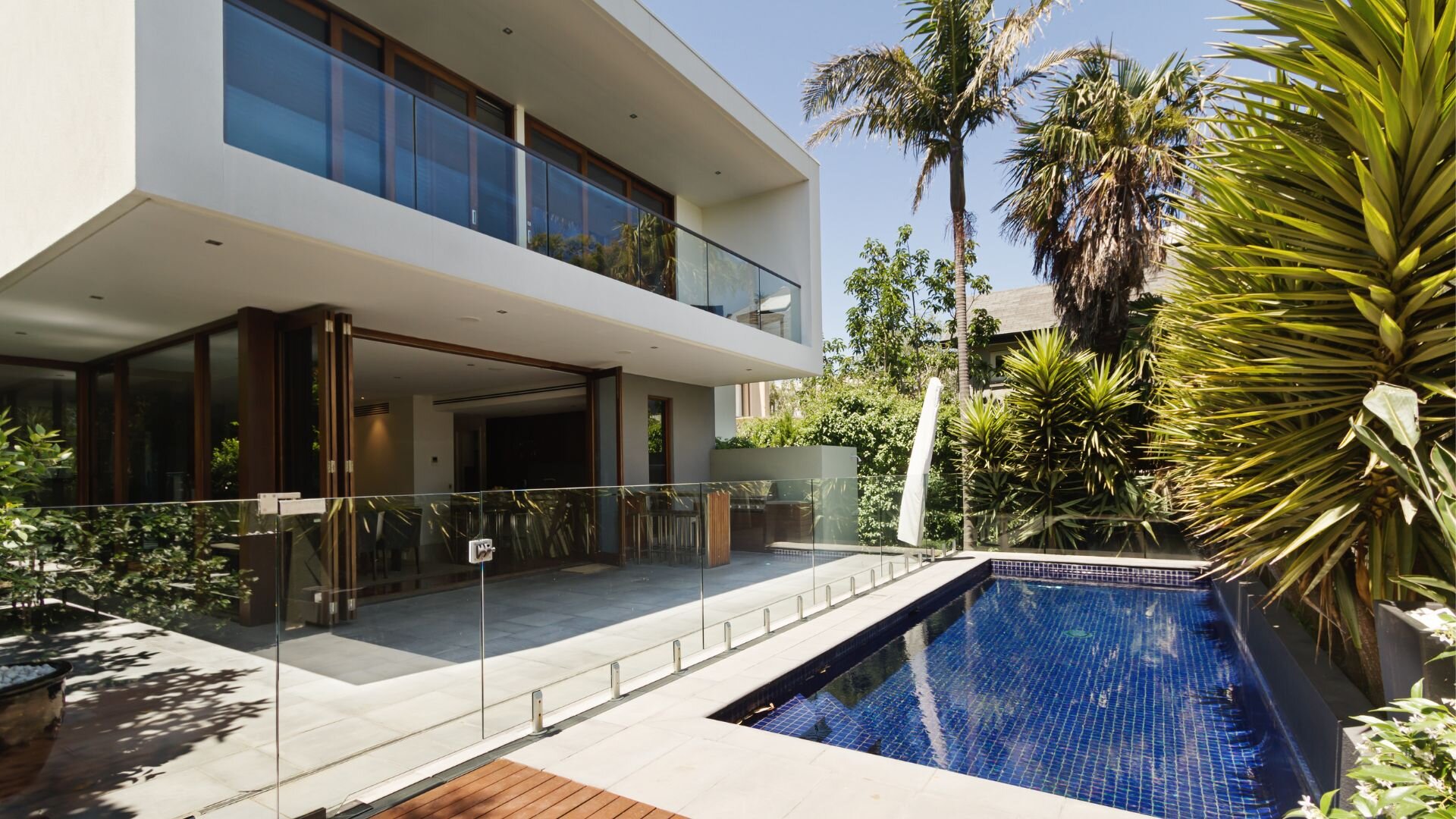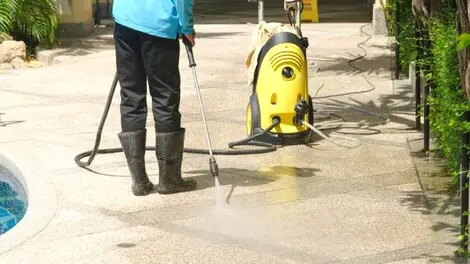Installing a new swimming pool area in your backyard is an exciting project that opens up many outdoor fun and entertainment possibilities. But a pool takes up a significant amount of space in your yard. Thoughtful planning is required to successfully integrate a pool into your landscape and create a cohesive look.
This article provides tips for seamlessly blending your new pool design into the surrounding yard and garden. We’ll explore pool landscaping ideas for plantings, hardscapes, views, and other design elements to enhance the pool area. With careful consideration of traffic patterns, safety, and aesthetics, you can craft a backyard oasis that maximises function and visual appeal.
Using Plants to Soften the Pool and Create Privacy
Strategically placed plants are key to integrating a new pool in your yard. Shrubs, trees, and flowering perennials help soften the pool’s hard edges. They provide privacy from neighbours, shade on hot days, and year-round interest.
Evergreen shrubs with dense foliage like holly and boxwood make excellent foundation plants around the pool deck. They conceal unsightly pool equipment and help the pool blend seamlessly into your landscape’s aesthetic properties.Plant tall trees like arborvitae strategically to block unwanted views and direct sight lines.

Low-growing grasses and spreading perennials add colour and texture when planted poolside. Choose plants adapted to pool conditions like moisture and chlorine exposure.
Tropical plants like elephant ears and canna lilies are commonly found growing poolside. Take care to avoid plants that attract bees and drop debris in the water. Your local nursery can recommend suitable pool landscape plants.
Incorporating Hardscapes and Design Elements
Beyond plants, integrating other design elements creates a cohesive look around the pool area. Patios, pathways, and decking help delineate space and direct traffic flow. Structures like pergolas, trellises, and perimeter walls establish boundaries and provide vertical interest.

Pool decking materials like stone, pool tiles, and pavers can mimic natural elements used elsewhere in your landscape. This helps the pool deck blend with the overall aesthetic. Use slip-resistant materials to prevent falls, especially where the deck meets the pool coping.
Strategically placed lighting illuminates spaces for nighttime use while adding ambience. Underwater lighting in changing colours creates dramatic effects. Outdoor fire features and water elements tie into the pool designs while enhancing the surrounding landscape.
Sculptures, ornamental pots, and containers make an excellent focal point, drawing the eye around the space. Repeat plants and materials from the broader landscape to maintain continuity. The goal is for the pool to feel like a natural part of your yard, not an isolated addition.
How to Seamlessly Integrate Landscaping for a Swimming Pool
Blending a swimming pool into its surroundings with thoughtful landscaping creates a unified backyard oasis. The goal is for the pool to look like a natural extension of the outdoor environment rather than a separate inserted element. Several techniques achieve this visual flow and continuity between aquatic features and landscape.
You can delineate the pool area from the rest of the yard using screening - take advantage of existing foliage like hedges and trees or erect trellises and perimeter garden beds. This helps define the zone while directing sightlines and filtering views. Incorporate evergreen foundation plantings to transition from lawn to pool deck seamlessly.

Provide shade relief from harsh sunlight using thoughtfully placed trees, vine-covered pergolas, and potentially freestanding cabanas within the defined pool area. Locate these near seating nooks so people can enjoy the water and cooling shelter. For visual interest, vibrant-hued pots, variegated leaves and bright tropical flowers enliven the deck and immediate pool surrounds.
Extend existing hardscapes like stone pathways, tile patios and wooden decking to intersect with the pool decking. This continuation of materials promotes overall cohesion so the pool ties back into the broader landscape.
Gentle slope transitions allow people to move safely between zones. Breaking up the large open space into intimate “rooms” for lounging, dining, and playing also integrates the pool area with its environment.
By layering screening, foliage, flowering accents, hardscapes and structures while enabling flowing movement around the pool, suddenly, there is no separation between the water feature and the garden. The entire exterior space works in unison.
Designing for Safety and Convenience

A beautiful pool area must also be functional, safe, and easy to maintain. Providing adequate access around all sides allows for cleaning and upkeep. Allow three feet or more of deck space between the pool and other plants and features. This ensures safe, slip-resistant traffic flow for pool maintenance and children at play.
Pool fencing with self-closing gates provides an essential safety barrier for small children and pets. Proper outdoor lighting lets you monitor the pool area after dark. Signage and artificial turf can designate “no diving” areas. And slip-resistant materials on decks and copings prevent hazardous falls.
Minimise lawn areas that require mowing and trimming with mulched beds, rock gardens and hardscape features. Landscape beds around the pool perimeter also absorb rainwater runoff and control erosion. Proper grading directs excess water safely away from the pool and structures.
Finally, locate pool equipment like pumps, filters and heaters conveniently for service while screening from view. Easily accessed storage keeps pool chemicals secure but handy. A nearby pool house or cabana provides shelter and space for toys, towels, and entertaining guests. Careful thought to layout streamlines maintenance and maximises the enjoyment of your swimming pool.
Tying It All Together
A successful poolscape seamlessly blends the new pool with existing garden spaces to create a unified backyard oasis. Repeat design elements like materials, plants, colours and styles to interlace the pool area with your home’s architecture and landscape style. Extend sight lines outward from the pool deck to create a feeling of openness.
Frame desirable views like distant mountains or garden focal points. Use trees and plantings to filter unwanted views. Curving paths entice you to explore the entire landscape and lead you naturally to the pool. The goal is an integrated, multifunctional space tailored to your site, lifestyle and priorities.
With mindful upfront planning, your swimming pool can be more than just a hole in the ground. It becomes an integral part of an outdoor area thoughtfully designed for recreation, relaxation, and entertaining family and friends. You should also consider additional features you’d like to include in your outdoor space, such as an outdoor kitchen, hot tub, or lounge area.
Contact the poolscape professionals at The Pool Co if you need help integrating a new pool into your Sydney landscape. From design to construction, their expertise helps build backyard pool dreams.
Frequently Asked Questions About Integrating Landscaping
What type of plants work best around a pool area?
Good poolside plants include tropical choices like elephant ears, hibiscus, and palms that can withstand pool exposure. Evergreen shrubs like boxwood make nice foundation plantings to blend the pool with your landscape. Avoid plants that shed debris or attract bees near water areas.
Should we incorporate a pool house or pavilion in our pool area?
A pool house or pavilion provides welcome shade and shelter near the pool. It also gives you a bonus entertaining space with room for seating, dining, and storage for pool toys and equipment. Locate it conveniently near the pool without obstructing access or views.
How much pool deck space should we allow?
Allowing at least 4 feet of decking around the pool perimeter is recommended. This ensures adequate non-slip traffic flow for pool maintenance, lounging, and play. Decks wider than 10 feet can feel overly massive.
What’s the best way to light our pool at night?
Underwater LED pool lights create a beautiful glow. Path lighting, step, and spotlighting also ensure safe nighttime access and ambience—place lights to showcase features and illuminate walking paths without glare.
What pool safety considerations should we plan for?
Decking and coping materials must be slip-resistant. Allow for self-closing, gated pool fencing. Locate pool chemicals securely. Identify areas with signage and blocking if diving is unsafe. Install anti-entrapment pool drain covers.
How do we blend our pool with the existing landscaping?
Repeat design elements like materials, plants and architectural details. Extend sight lines to “open” the space. A sufficient open area is essential, especially if you want your pool grating to prevent splashing on the adjacent flooring effectively. Use screening to filter unwanted views. Curving paths lead you naturally to the pool area. The goal is a cohesive flow between spaces.



